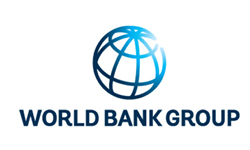Publications
Filter by
605 results found

The objective of the Diagnostic is to provide strategic, customized advice to client countries so they can make informed decisions in determining an operational plan for their PPP program, the choice of public investment vis-à-vis PPP, and type of PPP.


The report discusses forms of intervention and trade-offs, enabling factors, and evidence from case studies and stakeholder consultations in the areas of water, agriculture and energy. The report includes recommendations for a possible roadmap and funding options.

This report shows how competition policy can help African countries boost inclusive and sustainable development, the report outlines how competition policy can boost key sectors competition standards and legal/policy frameworks.

The main objectives of this report are to share information within the World Bank and with its partners and client countries about the World Bank's activities to support open data efforts.

The Capital Framework supports the successful delivery of capital projects in the ACT. It provides practical assistance to those proposing investment projects in the ACT.

The Infrastructure Prioritization Framework is a multi-criteria decision support tool that considers project outcomes along two dimensions, social-environmental and financial-economic to inform project selection.

These Guidelines provide a transparent framework for the ACT Government to develop and deliver Public Private Partnership (PPP) projects.

The MDBs’ Joint Declaration of Aspirations on Actions to Support Infrastructure Investment is a tool developed to ensure that MDBs work together to scale up infrastructure investment and attract private sector investment.


This publication discusses financial viability support in the global landscape of infrastructure finance.


UN ESCAP supports governments in Asia-Pacific in implementing measures to efficiently involve the private sector in infrastructure development.




The procurement guidelines were introduced in April 2015 by ADB. The purpose of these Guidelines is to inform those carrying out a project that is financed in whole or in part by a loan from the Asian Development Bank (ADB), ADB-financed grant, or ADB-administered funds.


The World Bank Group developed this tool to help governments systematically prioritise infrastructure investments to achieve their development goals, taking into account capacity and public resource constraints.

This guidance tool has been developed for governments that wish to enhance the viability of their PPP infrastructure projects.

This report examines the performance of the 14 largest container ports in the region based on two sets of criteria: operational performance and economic performance. To measure operational performance, the report benchmarks total time at port, waiting time at port, and idle time as a share of total time at berth. To measure economic performance, it benchmarks productivity and efficiency using two useful techniques: Malmquist total factor productivity decomposition and data envelopment analysis. The report identifies key drivers of port performance and examines how differences in performance across ports are related to those drivers.


The document provides a guidance for planning investments by the Government. The Governments currently cherry-pick the evaluation method that suits the result they want.



The UNECE International PPP Centre of Excellence has as its core vision the implementation of PPP solutions to promote the United Nations Sustainable Development Goals (SDGs).


The report first gives background information on infrastructure prioritization in Panama, then follows with a description of the IPF in technical and implementation terms.

This publication examines the direct and indirect benefits of public investment if carried out in a clean and efficient manner. It provides a Framework for Integrity in Public Investment, mapping out risks of corruption at each phase of the investment cycle. It also identifies tools and mechanisms to promote integrity in the public investment cycle and provides examples of their successful implementation in both the public and private sectors.


PFRAM is a tool that assesses potential fiscal costs and risks arising from PPP projects.



